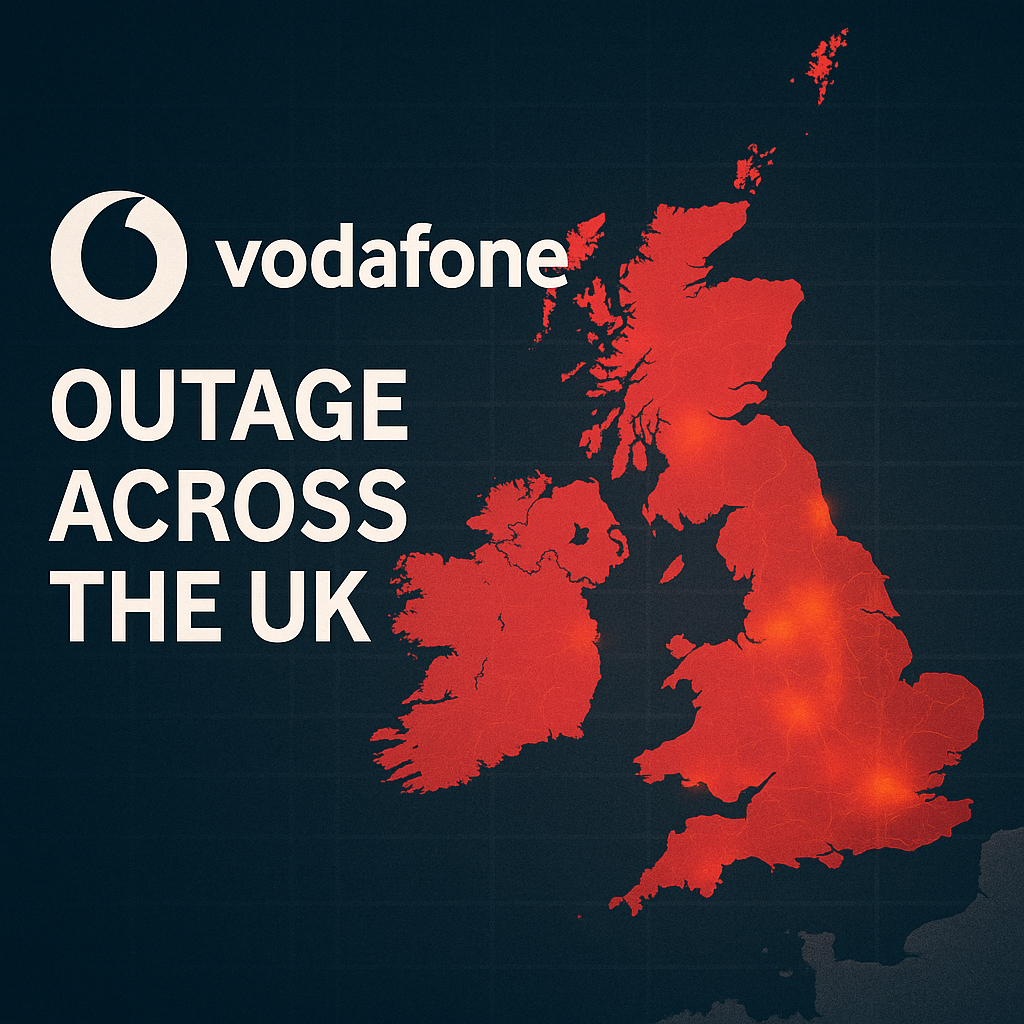A major network outage struck Vodafone UK, cutting off broadband, mobile data, and voice services for tens of thousands of customers nationwide. The disruption began suddenly and spread rapidly, leaving homes, businesses, and public institutions without reliable connectivity for several hours.
The Scale of the Blackout
Customers across England, Scotland, Wales, and Northern Ireland experienced near-total service failure. Both fixed broadband and mobile connections went offline simultaneously, and even Vodafone’s own website and customer-support channels became unreachable for many users. Reports indicated more than 100,000 people were affected at the peak of the outage, with metropolitan areas such as London, Manchester, and Birmingham hit hardest.
For many, the timing amplified the impact; remote workers lost access to online meetings, digital payments stalled, and streaming platforms ground to a halt. In some regions, the outage also disrupted smart home devices and internet-connected security systems, illustrating just how embedded broadband has become in daily life.
The Suspected Cause
While Vodafone had not immediately disclosed a root cause, early indications pointed to a failure within the company’s core network infrastructure – most likely involving the Domain Name System (DNS) or central routing servers. When such systems malfunction, they can paralyze both broadband and mobile traffic simultaneously, rendering even internal company websites and diagnostic tools inaccessible.
Industry analysts note that simultaneous failures across both fixed and mobile networks suggest a highly centralized point of dependency. In modern telecommunications architecture, a malfunction in a shared backbone or configuration server can cascade through the entire service layer, creating widespread blackouts within minutes.
The Customer Impact
Beyond the technical implications, the outage served as a reminder of how reliant modern life is on constant connectivity. Small businesses dependent on online transactions were unable to process payments. Households without mobile data struggled to access essential online services, from banking to emergency information. For individuals living alone or in rural areas, the blackout raised safety concerns due to the temporary loss of phone service.
As hours passed without an official statement, frustration mounted. Many users expressed concern about the lack of communication and transparency, arguing that clearer real-time updates could have mitigated confusion and panic.
Restoring Service and Looking Ahead
Vodafone engineers began restoring connectivity gradually, with some areas regaining partial service before full functionality was restored. The company later confirmed that an internal systems fault had triggered the disruption and assured customers that no external attack or data breach was involved.
Telecommunications experts expect Vodafone to conduct a full post-incident review to identify how redundancy and backup systems failed to activate. Such analysis is crucial, as large-scale outages across multiple service tiers are rare and indicate deeper issues within network design or operational protocols.
Lessons from the Outage
The incident highlights an uncomfortable truth: the UK’s communications infrastructure – though highly advanced – remains vulnerable to single-point failures. With increasing reliance on digital connectivity for work, education, and daily living, resilience and transparency are no longer optional features but essential obligations for service providers.
As connectivity resumes, customers are left with a pressing question: in an age where “always online” has become a necessity, how can one outage bring a nation offline?




